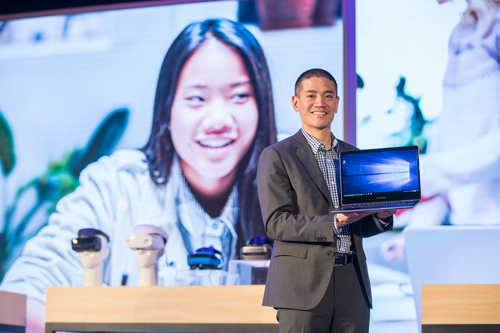Microsoft Defends Its Presence on OEMs' Hardware Turf
With a huge business built on providing software that ships with hardware produced by strategic ecosystem partners, Microsoft's own foray into hardware is a fraught affair.
The company's stated aim in designing its own hardware is to inspire hardware partners to leverage the full capabilities of Windows and other Microsoft platforms. When it works -- think the Microsoft Surface, Surface Book, HoloLens or Surface Pen -- the approach can spark new categories of popular devices from a range of vendors.
Other times, the results can be confusing, such as when Microsoft bought Nokia's phone business to bolster its struggling Windows Phone platform, and counterintuitively predicted that by owning the biggest manufacturer of Windows Phone devices, Microsoft would somehow encourage more handsets for that ecosystem from other vendors. It didn't pan out that way.
In the midst of another confusing chapter in its hardware efforts -- the rollout of the Microsoft Surface Laptop family -- Microsoft executives at the Computex 2017 show in Taiwan seemed to feel the need to clarify that their hardware strategy continues to be about driving growth and customer demand for the OEM partner ecosystem.
"Our partner model is unique in the industry as we collaborate end-to-end, from design through all phases of the product lifecycle and across consumer and device channels. Together, we are building new experiences for customers, generating demand, and ultimately creating growth in existing and new categories including mixed reality, the Internet of Things, and Always Connected PCs with Intel and Qualcomm," said Nick Parker, corporate vice president of consumer devices and sales at Microsoft, in his Wednesday keynote at Computex, one of the largest gatherings of PC OEMs in the world.
 Microsoft's Peter Han, displaying the Samsung Notebook 9 Pro at this week's Computex event. (Source: Microsoft)
Microsoft's Peter Han, displaying the Samsung Notebook 9 Pro at this week's Computex event. (Source: Microsoft)
"At Microsoft, our success scales with our partners and, as an ecosystem, we reinvent existing markets even as we explore new ones," Parker said.
Backing up Parker with an implicit message that Microsoft OEM partners are on board and working with Microsoft to jointly make and flood new technology niches, Microsoft's Peter Han took the stage in Taipei to show new devices from a variety of vendors.
The highlight was Always Connected PCs and devices, which use integrated LTE or eSIM and involve both hardware partnerships and mobile operator partnerships. Intel already claims more than 30 Always Connected PCs in the market. Microsoft on Wednesday pointed out partnerships with Intel, Qualcomm, ASUS, HP, Huawei, Lenovo and Xiaomi.
Then there were Windows Mixed Reality headset designs coming later this year from Acer, ASUS, Dell, HP and Lenovo. Han also showcased OEMs' Windows 10 devices tuned for the Windows 10 Fall Creators Update from Acer, ASUS, Dell, HP, Lenovo, MSI, Panasonic, Samsung and Toshiba.
Microsoft name-checked most of the big OEMs in its annual show of force at Computex. While the overt message was about a vibrant ecosystem building interesting systems around Windows, the subtext in this flat-at-best global PC market seemed to be this: Windows will still live or die by the success of OEM partners, not by the strength of Microsoft's own hardware unit.
Posted by Scott Bekker on May 31, 2017